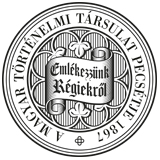Századok – 2009
TANULMÁNYOK - Miskolczy Ambrus: A szabadkőművességtől a nyilvánosságig. Kazinczy Ferenc és eszmetársai a magyar magántársasági demokratikus kultúra hőskorában I/3
az áldozatok, amelyeket megoldásuk szükségessé tesz?"119 A válasz — dolgozatom válasza — azonban az, hogy voltak törekvések a megoldhatatlan problémák megoldására, és készség is mutatkozott az áldozatra, Amikor viszont szembekerülünk a megoldatlan problémákkal, akkor a történelem tanulságaira szoktunk hivatkozni. Ez a hivatkozás olykor csak egyfajta szellemi játék, olykor politikai instrumentalizációs manőver; boldogabb tájakon annak tudatosítását célzó erőfeszítés, hogy a történettudomány az önismeret tudománya,12 0 és a múlthoz való viszony meghatározza a jelen kérdéseinek megválaszolását.12 1 Szép, az égi végtelenbe és a földi semmibe ívelő — tudományosan is többé-kevésbé homályos — cirádákat lehet erről írni. De mielőtt oda érnénk, a hazai körülmények között érjük be annak jelzésével, hogy a zajos és látványos történelem és a róla szóló reprezentációs és reprezentatív sémák mellett van egy másik történelem, a rendhagyó — ám nem kontrafaktuális, normatív és ezért többé-kevésbé amorális — történelem. A rendhagyó történelem megjelenítése — talán — némileg annak éltetése is. Figyelmeztetés arra, hogy a múlt, jelen, jövő történelme a lehetőségek és a lehetőségekről való gondolkodás történelme is. És a régi fény árnyékában csak megismételhetjük az új keletű óhajt: „Jöjjön el tehát, felvilágosodás! a te országod!"12 2 FROM FREE MASONRY TO PUBLICITY. FERENC KAZINCZY AND HIS INTELLECTUAL COMPANIONS IN THE HEROIC ERA OF THE DEMOCRATIC CULTURE OF HUNGARIAN PRIVATE SOCIETY by Ambrus Miskolczy (Summary) One char acte ritic episode of Hungarian historiography was the so-called dispute of continuity. The dispute was around the transition from free masomy to the emergence of political liberalism demanding publicity, and the survival (or non-survival) of the ideals of enlightement between the mid-1790s, that is, the so-called Jacobin conspiracy and the 1830s. Contrary to the traditional approach of interruption, the present study analyses the paradigmatic social form and dynamics of continuity by examining some aspects of the activity of Ferenc Kazinczy and his intellectual companions. Continuity was secured by the democratic culture of private societies, which can be regarded as the survival of the democratic culture of secret societies, whereas the available forums of publicity were used for keeping the reform of language alive. The scenes of language reform and literature are protoideological scenes, where the logic of argumentation is similar to that of political argumentation. It was only in this protoideological scene that the modern ideal of liberty could avail. People were working hundreds of miles from each other, yet their work was in a sense collective. An example is Kazinczy's Ode to Liberty, which is a paraphrase of the Fichteian argumentation of Pál Sipos, divine-philosopher from Transylvania, and one of the finest pieces of Hungarian philosophical poetry. Gergely Berzeviczy was the only one in Iiis hermitage at Kakaslomnic to consider general and radical political reforms, but at the same time he was in contact with some leaders of the secret police and hoped for a post-Josephinist coup d'état. Berzeviczy sharply objected the idea of transforming the Hungarian into an official language, and argued for the dominance of Latin as an imperial language. But when the dissolution of the Monarchy seemed inevitable, Berzeviczy prepared a proposition for Napoleon in which he argued for an independent bourgeois Hungary with the abolition of jobbágyság in exactly the same form as it was finally done in 1848. As a publicist Berzeviczy kept the problem of jobbágyság on the agenda, 119 Gratz: A dualizmus, 202. 120 Quentin Skinner: Visions of Politics. I. 2002. 89. 121 Norbert Elias: A németekről. Bp., 2002. 381. 122 Zoványi Jenő: A felvilágosodás története. Bp., [1922.] 185.
